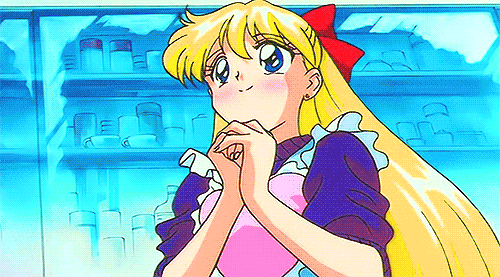hey guys xoxoxox
so yet again i am BACK with more feminist-y stuff. i wrote my dissertation at university about the value of sailor moon and with the relaunch of the series this year i thought i'd drag all this stuff back up. it's kinda become fashionable recently to watch and invest in the franchise and i'm so glad it has!!! because i believe as a series it's really apt and empowering esp for young people. anyway i did a hell of a lot of research for my paper sooo this'll have lots of stuff to back it up.
girl power aimed to redefine what it meant to be feminine in the late 20th century. early third-wave feminist groups like the Riot Grrrls kicked off the movement by aiming to take “feminine” traits which were seen as negative, such as vanity, and turning them into positive notions of self-appreciation. thus, girl power aimed to represent that “'femininity' is not opposed to feminism, but is positioned as central to a politics of agency, confidence and resistance.” (Munford) It aimed to present these feminine “acts” not as a shameful product of the patriarchy, but to affiliate them with freedom, irreverence and independence.
this is certainly still a relevant movement today ( although arguably under a slightly different guise ) as young women still strive to redefine both femininity and feminism - this is plain to see within blogging communities on tumblr and within art, fashion and music. choice has always been a significant word in the feminist movement and maybe even more so over the past ten years, and sailor moon definitely illustrates this.
Takeuchi supports these ideas by utilising aspects of stereotypical femininity and displaying them in a positive light. this can most clearly be seen in the protagonist, Usagi Tsukino, the alter-ego of Sailor Moon. usagi herself undoubtedly “acts” as a female. she is often depicted with love hearts in her eyes as she looks at pretty clothes, good-looking boys or sweets. by unabashedly adopting girlish traits and adoring girl culture without shame she is embodying some of the values that “girl power” promoted.
importantly as we discover, the feminine usagi is connected to a higher and more adult sensibility than is first apparent. usagi and her friends have been reborn on earth in order to awaken in the future. as they discover, they were the protectors of the moon, and played highly important roles within the Moon Kingdom. this is interesting because, as young girls, their own adolescent fantasies are often diminished and side-lined by society at large, yet in Sailor Moon the girls act as the link between earth and the rest of the universe. just by associating “Usagi” with “Sailor Moon”, Takeuchi portrays her girly lifestyle as important.
how great is it that usagi shows young girls that you can be into fashion, makeup and boys AND still 'save the world'??? v great i'd say.
oh also, Takeuchi makes this even more apparent by directly associating 'girly' attacks with physical strength. lets clarify -
so - it is not often that you see tears ( emotion - typically 'girly' ) melting a villain’s face off. Takeuchi assists girl power in characterising feminine “acts” as capable; just as capable, if not more, as the testosterone-driven “acts” of a male hero. “G33k_anddestroy” concurs: “[Putting] forth a female superhero that uses a stereotypical feminine trait to defeat enemies, which is shown to be even stronger than stereotypical masculine traits such as aggression and violence, is a very positive message in my eyes.”
and need i mention the destructive power of "rainbow moon heartache" and "silver moon crystal power kiss"? yeah. it's cool to see lovehearts and flowers obliterating bad guys.
as i said earlier, the word "choice" is extremely important in the feminist movement. sailor moon does not present usagi's stereotypical femininity as the only femininity. the sailor scouts, her best friends, represent a wide range of women:
 |
| Sailor Mercury is maternal, caring and loves math and computers |
 |
| Sailor Jupiter is a tomboy who also loves to bake |
 |
| Sailor Venus is a lively romantic |
to put it another way, the scouts both disregard and acknowledge gender binaries. they confirm these actual gender “acts” by performing them as they are supposed to be performed like Usagi's typical femininity. however they individually freely and knowingly participate in both male and female “acts”. most blatantly - sailor jupiter is a tomboy who was expelled from her last school for fighting. however she also enjoys cooking, cleaning and more domestic tasks. freedom to display differing elements of gender in your character is certainly inclusive of the third-wave “messiness” that defined it. indeed, embracing contradiction and paradox was a notable feature of the third-wave, tracing back to the Riot Grrrls who purposefully used to wear a mix of different fashions together - Dr Martens (which have masculine connotations) with pretty feminine dresses and so on. as Baumgardner and Richards explain, “girl power” acknowledged that “feminine things weren’t truly the problem – being forced to adopt them was.” in other words, girl power encouraged the adopting of the traits of your own choice, whether they were masculine, feminine, or anything in between. the movement thus insisted that empowerment was accessible to every woman, no matter what “type” of girl she may be.
anyway i could literally write about this topic for hours and hours but i'll stop there. i hope you enjoyed reading and keep watching SMC!!





